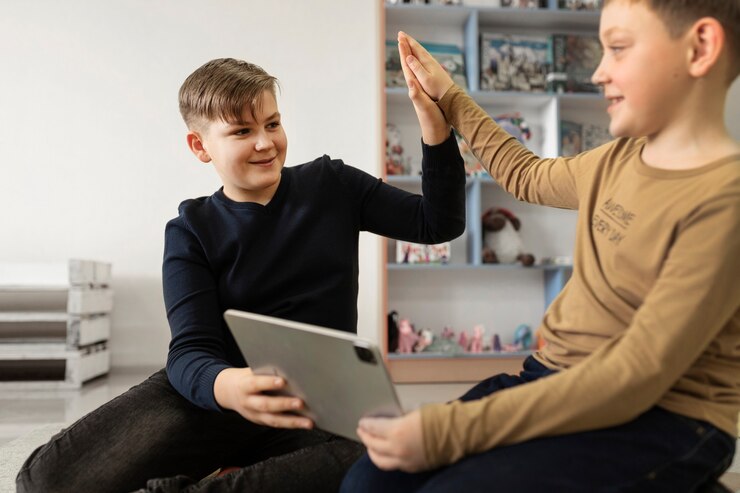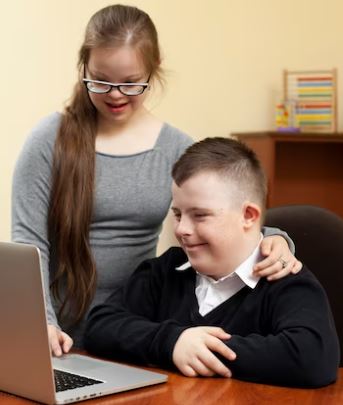
For children diagnosed with autism, communication, social interaction, and daily activities can be challenging. Assistive technology (AT) and related devices, in this regard, can be of significant help. These devices are specially designed to enable children on the autism spectrum live more independently while being able to access important services and information.
Assistive technology for ASD can also safeguard the interests of children – increasing their privacy as well as dignity by enabling care to be delivered only when required. Besides, the use of these technologies also encourages them to make independent decisions and choices about their own lives, thus improving their ability to perform daily activities and overall well-being.
This article covers the ways in which assistive technology can help a child with autism, as well as the advantages of the various options available.
Improved Communication

For some children with ASD, problems with social interactions and communication are relatively subtle. However, for others, even initiating or maintaining basic interactions can be challenging. Assistive technology can help children on the autism spectrum communicate more effectively through alternative means like augmentative and alternative communication (AAC) devices. For example –
o Proloquo2Go is a completely customizable AAC app with over 100 free natural-sounding text-to-speech voices across all languages – the voices are created using real recorded speech, making them feel astoundingly natural. The symbol-based app’s versatility makes it highly advantageous for non-verbal children with autism.
o Jellow Communicator is an AAC solution that makes use of icons in order to facilitate communication in children who face difficulties with language and speech.
o Avaz App is a picture and text-based AAC app that enables children with complex communication needs to learn and express themselves better. The app constitutes a robust vocabulary graded in three levels. These include beginner, intermediate, and advanced.
Supports Learning
Some of the most common learning challenges faced by children on the autism spectrum are problems with language development and speech delays. Assistive technology can play an important role in helping children learn and retain information better and more easily through visual as well as auditory aids. Aligning with this, various types of software and apps intended to help visual learners write, think, and communicate, are available –
o Livescribe’s Smartpen is an assistive technology aid that helps facilitate learning and note-taking. Recording classroom discussions while taking fewer notes enables children with intellectual difficulties to spend more time learning and listening.
o Visual learners can utilize signs and pictures, such as those from the Boardmaker program. The visual support software helps children with autism understand concepts and routines through pictures and symbols.
Promotes Independence

Assistive technology can help children on the autism spectrum become more independent by enabling them to accomplish tasks they may not otherwise be able to do on their own.
o Apps like Choiceworks can help children with autism complete daily routines by providing visual schedules and timers. The app is an excellent choice for establishing visual schedules in order to guide them through multi-step tasks and routines, such as calming down when they’re upset or getting ready in the morning.
Reduces Sensory Overload
Difficulty in focusing due to competing sensory input, restlessness and discomfort, and extreme irritability are some of the ways in which children with ASD experience sensory overload. Here, assistive technology can be extremely beneficial in helping kids manage sensory overload by providing tools that minimize distractions and build a calming environment.
o The Relax Melodies app can help provide soothing sounds to help children with autism regulate their emotions. In addition to encouraging a relaxing and calming ambiance, the intuitive tool also aids better sleep.
o Magic Fluids Free has proven to be highly popular among children with ASD. Essentially, it is an interactive live wallpaper that lets users play with various visual effects on the screen. It is particularly helpful for kids on the autism spectrum who have difficulty calming down.
Enhances Social Skills
AAC tools and solutions can help children improve and practice their social skills through virtual as well as interactive simulations. For example –
o The Social Express is an engaging platform for children on the autism spectrum. The social skills program-oriented app helps develop social skills and abilities while helping children build fulfilling and meaningful social relationships. The characters in the app are depicted in social encounters inside as well as outside of school, where recognizing and understanding their companions’ emotions helps achieve the resolution. Moreover, the interactive games and scenarios also help kids learn social cues and develop communication skills.
Promotes Executive Function

While some children on the autism spectrum operate on a very flexible schedule, unaware of what time it is and how long it may take to finish a particular task, others may adhere to a very strict schedule – often managing it to the minute or second. With regard to this, assistive technology can help children with ASD develop executive function skills such as planning, organization, and time management.
o I’m On It: Focus Timer can be super beneficial for children who have a hard time retaining focus. The simplistic timer app can be set for up to 60 minutes, with the remaining time displayed in either a digital timer, traditional clock face, or a progress bar. It also helps children understand the concept of time and manage their schedules.
o Companion by Identifor is an app best suited for children looking for more independence but still requiring a certain degree of assistance. Its core features include task reminders delivered via text messages and notifications, school and work schedules, and calendar management.
Assistive technology can be a powerful tool for children, helping them to better communicate, learn, and navigate their environment. In essence, the advantages of AAC for children on the autism spectrum include –
- Improved Communication
- Supports Learning
- Promotes Independence
- Reduces Sensory Overload
- Enhances Social Skills
- Promotes Executive Function
And as evidenced, the benefits of using assistive technology are profound, as it helps to improve children’s learning capabilities, fosters their independence, and encourages them to form meaningful relationships with peers and family members.
At Early Autism Services (EAS), we believe the best way to develop your child’s potential is through proactive, personalized autism therapy programs to enable families to work hand in hand with licensed professionals.
So, don’t wait any longer and book a consultation call with our autism care experts right away: +91 8929153820





Recent Comments